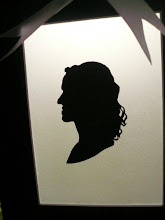
The kitchen in the historical Sun Yat House

The main room in the Sun Yat house. Here you can see the big windowless skylight that all Chinese shop house have in the middle room. On rainy days it rains right into your house.

Ricksaws drive through the Heritage District

Entrance to the stately Kongsi House

Vintage Chinese Shop Houses

We visited
Penang,which is my favorite place in
Malaysia, because of it's heritage district in the heart of the city. There you still find the old chinese shop houses and rickshaw. Buildings left over from another time, that has been erased throughout
Asia. Two reasons for that: modern Asia is either communist or it's the colonial times these buildings stem from and nobody wants to be reminded of. Only recently have they realized the historical value of these buildings. And the Penang heritage district has been declared a world heritage site by UNESCO.
I enjoyed the culture there tremendously, stolling around and looking at old houses and their beautiful interiors: faded and washed out periwinkle blue walls, bird cages and woven baskets hanging from the ceiling, old chinese wooden sideboards that were once painted with gold and red ornaments, crackle glazed celadon earthenware dishes and white and blue patterned Chinese tiles on the floor...



























